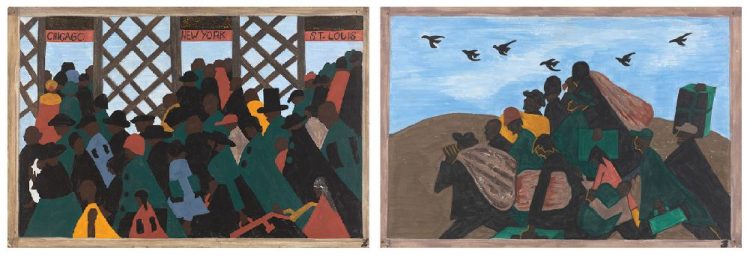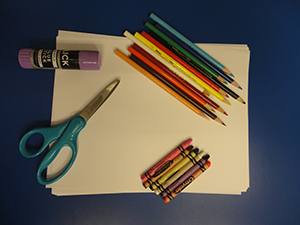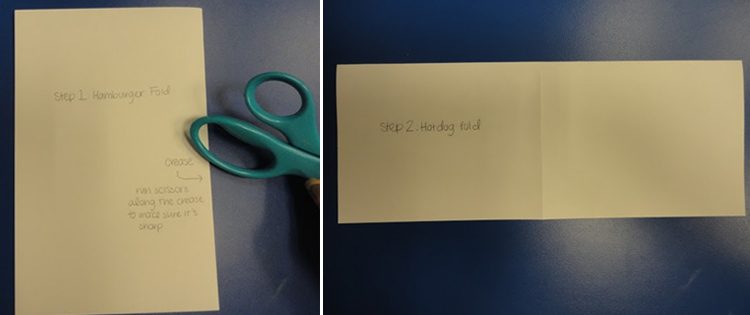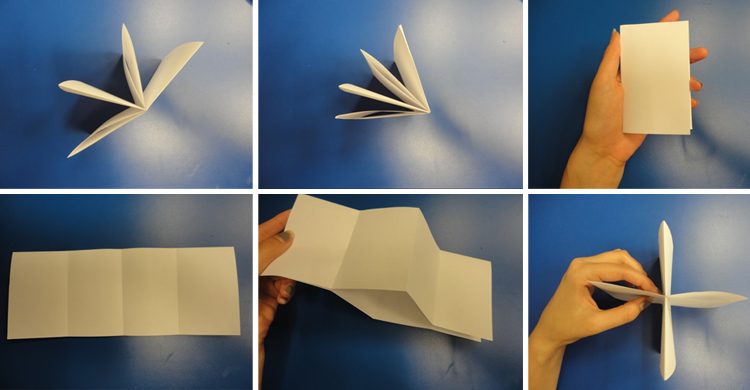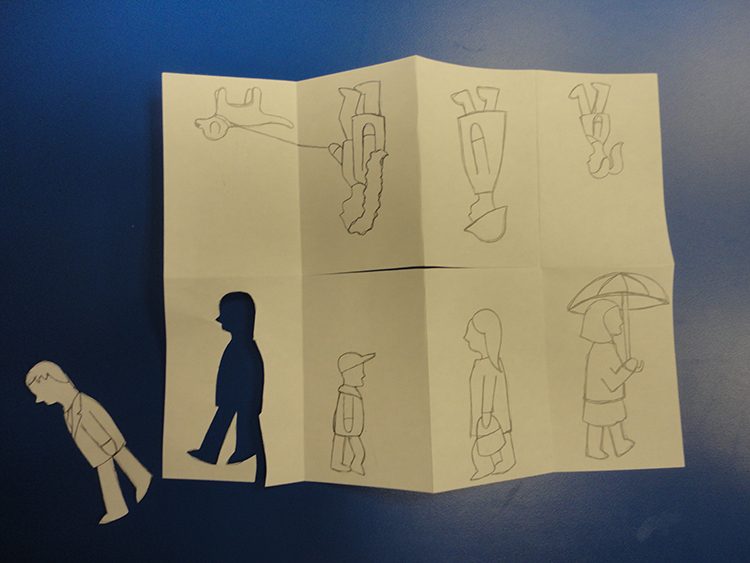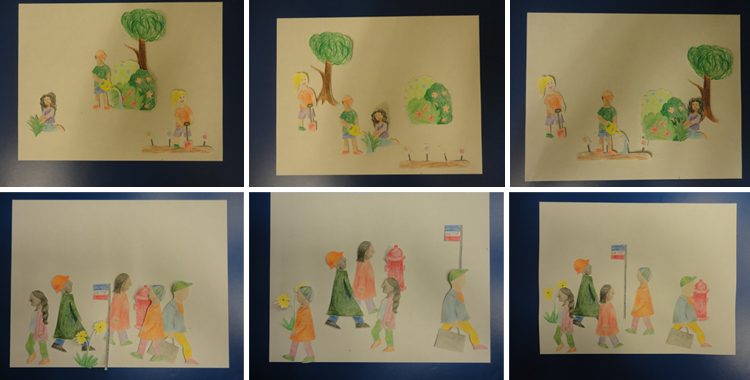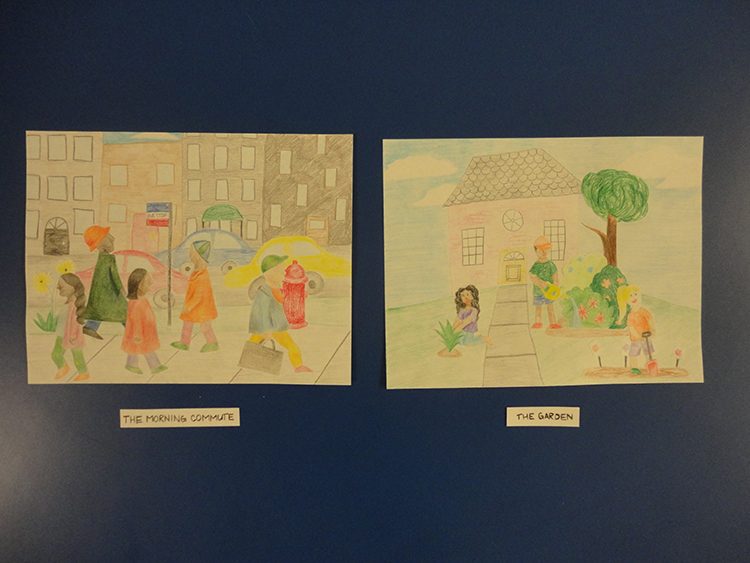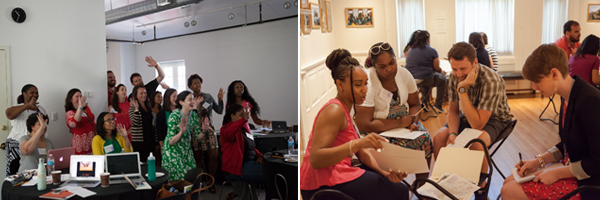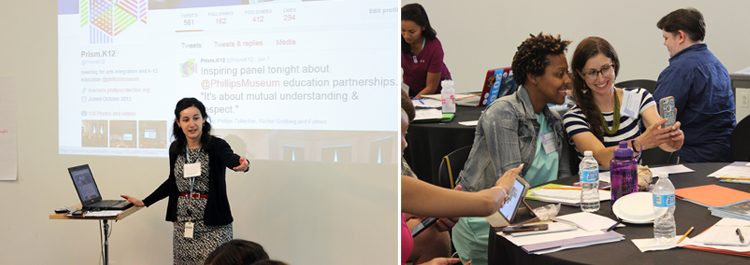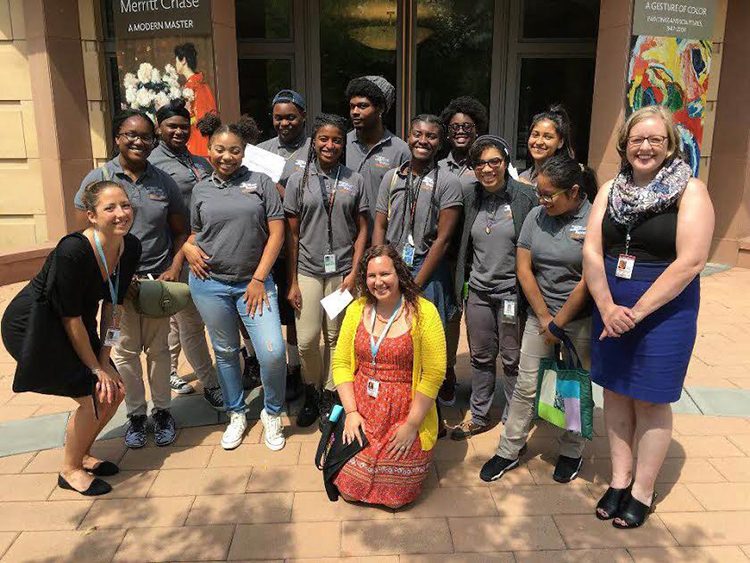
Student ambassadors from “Bringing the Lessons Home” with the School Programs Educators who led their tour of The Phillips Collection. Photo: James Fleming
As a School Programs Educator at The Phillips Collection, each teaching opportunity is a unique and special experience. I was recently part of something that felt extra special when I collaborated with James Fleming, Program Coordinator of Youth and Community Initiatives at the United States Holocaust Memorial Museum (USHMM). James brought his student ambassadors from the “Bringing the Lessons Home” program to tour the Phillips at the start of their Art and Memory project. This project was first adapted by USHMM in 2006 from an Israeli project, Dor le Dor (Generation to Generation), which pairs high school students with holocaust survivors. The students interview the survivors and then work together to capture the essence of the stories in an artwork.
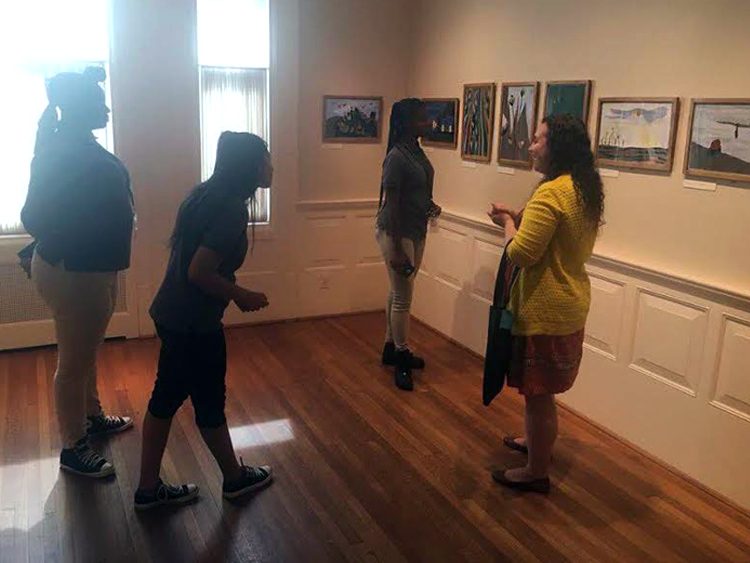
Students investigate Jacob Lawrence’s use of line, shape, and color in The Migration Series. Photo: James Fleming
James expressed to me early on that the artistic ability and confidence level of participants in the program varied greatly. He wanted to expose the students to a variety of artworks to help them understand that there are many different ways art can visually convey emotions and ideas. During their tour, student ambassadors carefully looked at how artists made choices about color, line, and shape, among other elements.
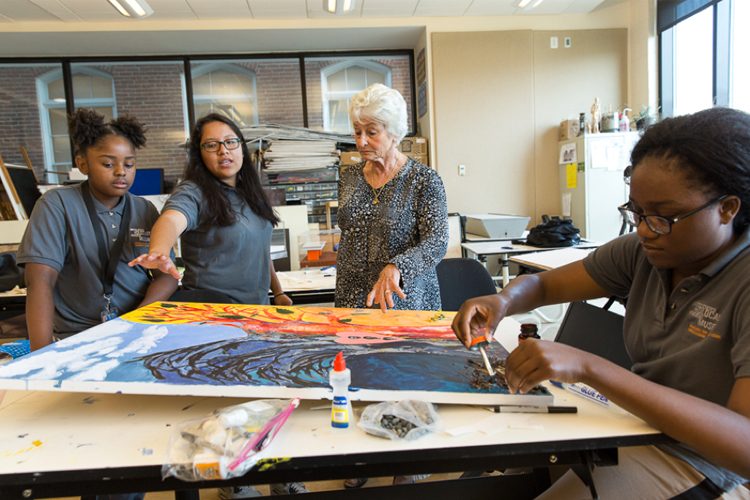
Students discuss their plans and progress with the holocaust survivor whose story and ideas they have represented. Photo: Miriam Lomaskin
My fellow educators and I were blown away by their insights through the lens of their own life experiences! At the close of the tour, James invited me to visit the students while they worked on their artworks with the survivors.
When I arrived at their classroom, it was a typical high school scene: hanging out , eating, and showing each other pictures on their phones. However, when the survivors got there, the students got straight to work and took their time very seriously. They clearly felt the responsibility of honoring these important memories. Many expressed their wishes for more time with the survivors to really “get it right.” They seemed pleased, though, with what they were able to accomplish in their brief time together. One student proudly stated, “That was my part, my idea!” after I had admired the use of symbols to help tell the story of the selection process at a work camp.
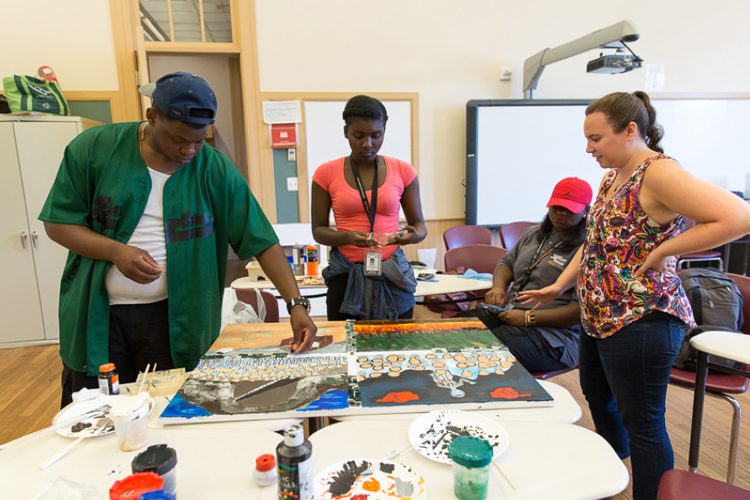
Students apply finishing touches to their Art and Memory artwork and explain their artistic decisions to Heather (School Programs Educator). Photo: Miriam Lomaskin
When I asked students how their time at the Phillips impacted their project, I got a variety of responses about learning to use different colors, making things abstract, and building a comfort-level in making art. One student explained, “It helped to know that things don’t have to look exactly like the real thing;” another stated, “Simplicity is okay as long as you get your message across well.”
I hope the students have a chance to visit the Phillips again this fall, when the complete Migration Series by Jacob Lawrence, a work that inspired and encouraged many of them, will be on view.
Heather Brubach, Phillips School Program Educator


